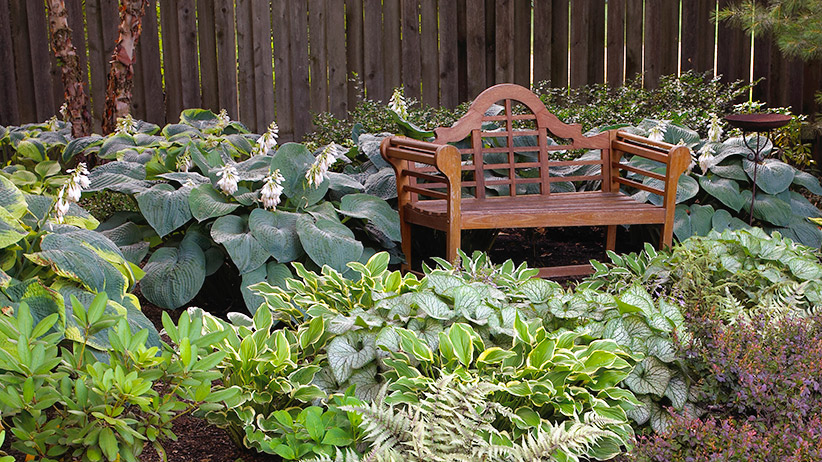Gardening in shaded areas can be challenging. Not all plants thrive without direct sunlight.
Shade-tolerant garden plants are the perfect solution for those dim corners in your garden. These plants flourish in low-light conditions, bringing life and color to spaces where the sun doesn’t shine as brightly. Whether you have a north-facing yard or a tree-covered garden, shade-tolerant plants can transform these areas into lush, vibrant landscapes.
Understanding which plants can grow in shade helps you create a beautiful garden without worrying about sunlight. In this blog post, we’ll explore a variety of shade-tolerant plants that can thrive in your garden, ensuring you have a green, healthy space no matter the light conditions.
Introduction To Shade-tolerant Plants
Gardening in shaded areas can be challenging. But, it is possible with the right shade-tolerant plants. These plants thrive with less sunlight. They are perfect for gardens with limited direct sun.
Shade-tolerant plants add color and life to dark corners. They come in many varieties. From flowers to foliage, there are many options. Let’s explore the benefits and types of shade-tolerant plants.
Benefits Of Shade-tolerant Plants
Shade-tolerant plants offer many benefits. They can:
- Enhance beauty: Add color and texture to shaded areas.
- Reduce maintenance: Need less water and care.
- Improve soil health: Their roots help prevent soil erosion.
- Support wildlife: Provide habitats for insects and birds.
Types Of Shade In Gardens
Understanding the types of shade is crucial. It helps in selecting the right plants. Here are the main types:
| Type of Shade | Description | Example Plants |
|---|---|---|
| Full Shade | Less than 3 hours of direct sunlight daily. | Ferns, Hostas |
| Partial Shade | 3 to 6 hours of direct sunlight daily. | Astilbe, Bleeding Heart |
| Dappled Shade | Sunlight filters through trees or structures. | Heuchera, Foxglove |
Choosing the right shade-tolerant plants ensures a thriving garden. Assess your garden’s shade type. Then, select plants that suit those conditions.
Selecting The Right Plants
Choose shade-tolerant garden plants for areas with limited sunlight. Ferns, hostas, and impatiens thrive well in shaded spots. Create a lush garden even without full sun.
Choosing the right plants can transform your shady garden into a lush haven. Some plants thrive in low-light conditions, bringing color and texture to those darker spots. Knowing which plants to choose is key to a thriving shade garden. Below, you’ll find recommendations for both perennials and annuals that love the shade.
Perennials For Shade
Perennials are great for shade gardens. They come back year after year. Hostas are a top choice. They have large, lush leaves. They thrive in partial to full shade. Ferns also do well in low light. Their delicate fronds add elegance to any garden. Astilbes are another option. They offer beautiful, feathery plumes. They bloom in shades of pink, red, and white. Bleeding hearts are perfect for shaded areas too. Their heart-shaped flowers are unique and charming.
Annuals For Shade
Annuals add color and variety. They grow quickly and bloom all season. Impatiens are a favorite. They come in many colors and thrive in shade. Begonias also do well in low light. Their waxy leaves and bright flowers are eye-catching. Coleus is another great choice. Its vibrant foliage brings life to shady spots. Fuchsias are perfect for hanging baskets. Their drooping flowers attract hummingbirds.
By selecting the right shade-tolerant plants, you can create a stunning garden. Both perennials and annuals offer options that thrive in low light. Choose wisely and enjoy a lush, colorful garden all season long.
“`
Foliage Plants For Shady Areas
Shade-tolerant gardens can be stunning with the right foliage plants. These plants thrive in low light and add beauty to your garden. Let’s explore some fantastic foliage plants for shady areas.
Hostas
Hostas are popular shade-loving plants. Their large, textured leaves come in various shades of green, blue, and even gold. They are easy to grow and maintain. Hostas can create a lush, green backdrop in your garden. They also produce delicate flowers in the summer, adding extra charm.
Ferns
Ferns are ideal for shady gardens. They have feathery, delicate fronds that add a touch of elegance. Ferns thrive in moist, well-drained soil. There are many types of ferns, each with unique leaf patterns and textures. They are perfect for creating a woodland feel in your garden.

Credit: www.gardengatemagazine.com
Flowering Plants For Shade
Finding the right flowering plants for shaded areas can be a challenge. Many beautiful plants thrive without full sun, adding color and life to your garden. This section highlights a few top choices for shade-loving blooms.
Astilbes
Astilbes are perfect for shady spots. Their feathery flowers bloom in vibrant shades of pink, red, and white. They also have lush, green foliage that adds texture to your garden. Astilbes need moist soil to thrive. Water them regularly to keep the soil damp.
Begonias
Begonias are another great choice for shade. They have stunning flowers in many colors, such as pink, red, and orange. These plants also have interesting leaves that can be green, red, or even spotted. Begonias grow well in pots or directly in the ground. They prefer well-drained soil and consistent moisture.
Shrubs For Shady Gardens
Creating a lush garden in a shady spot can be challenging. But it’s not impossible. Shade-tolerant shrubs can thrive and add beauty to your garden. Below are some great shrub options for shady gardens.
Hydrangeas
Hydrangeas are beloved for their large, beautiful flower clusters. These shrubs can thrive in shady areas and add a pop of color. Here are some tips for growing Hydrangeas:
- Plant in well-drained soil
- Water regularly
- Fertilize in spring and summer
| Type | Bloom Time | Color |
|---|---|---|
| Bigleaf Hydrangea | Summer | Pink, Blue |
| Panicle Hydrangea | Late Summer | White, Pink |
Rhododendrons
Rhododendrons are another excellent choice for shady gardens. They offer lush foliage and vibrant flowers. To grow Rhododendrons successfully, consider these tips:
- Provide acidic soil
- Mulch to retain moisture
- Prune after blooming
| Type | Bloom Time | Color |
|---|---|---|
| Catawba Rhododendron | Spring | Purple, Pink |
| Yak Rhododendron | Late Spring | White, Pink |

Credit: www.facebook.com
Ground Covers For Shade
Finding the right ground covers for shaded areas can be challenging. These plants need to thrive with limited sunlight. Thankfully, some hardy options can beautify your shaded garden spaces. Let’s explore two excellent choices: Pachysandra and Vinca Minor.
Pachysandra
Pachysandra is a popular ground cover plant for shaded areas. It grows well under trees and in other low-light spots. This evergreen plant spreads quickly. It forms a dense mat of glossy green leaves. Pachysandra is low-maintenance and requires minimal care. It can tolerate poor soil conditions. In spring, it produces small, white flowers that add a touch of elegance.
Vinca Minor
Vinca Minor, also known as periwinkle, is another great choice. It thrives in partial to full shade. This plant has dark green leaves and lovely blue or white flowers. Vinca Minor spreads rapidly, covering ground efficiently. It is also drought-tolerant once established. This makes it a resilient option for shaded areas. Vinca Minor is ideal for preventing soil erosion on slopes.
Design Tips For Shady Gardens
Designing a garden with limited sunlight can be challenging. But, it can also be beautiful and lush. The key is to use plants that thrive in the shade. By understanding how to layer plants and use color and texture, you can create a stunning shady garden.
Layering Plants
Layering plants is essential for a shady garden. It adds depth and interest. Start with taller plants in the back. Use medium-sized plants in the middle. Place shorter plants in the front. This creates a tiered effect.
Here are some plant suggestions for layering:
| Plant Type | Examples |
|---|---|
| Tall Plants | Ferns, Hostas |
| Medium Plants | Astilbe, Bleeding Heart |
| Short Plants | Heuchera, Lungwort |
Using Color And Texture
A shady garden does not have to be dull. Use color and texture to make it vibrant. Choose plants with different leaf colors. Deep greens, silvers, and even purples can add interest. Flowers like impatiens and begonias can provide bright colors.
Texture is also important. Combine plants with smooth leaves with those that have rough or feathery foliage. This contrast makes your garden more engaging.
For example:
- Heuchera – has smooth, colorful leaves.
- Ferns – offer a feathery texture.
- Hostas – provide large, broad leaves.
- Astilbe – has delicate, feathery flowers.
By using these tips, you can design a beautiful garden even in the shade. Enjoy the process and watch your garden thrive.

Credit: dk.pinterest.com
Maintenance Of Shade Gardens
Maintaining a shade garden can be both rewarding and challenging. Proper care ensures your plants thrive in low light conditions. Let’s explore some key aspects of maintaining a shade garden.
Watering And Fertilizing
Shade plants need less water than sun-loving plants. Check the soil moisture regularly. Water deeply but infrequently to encourage deep root growth. Use a soaker hose to water the base of plants directly.
Fertilizing shade-tolerant plants is different too. Use a slow-release fertilizer to provide nutrients gradually. Organic compost is also a great choice. It improves soil structure and adds essential nutrients.
Pest And Disease Control
Shade gardens are less prone to pests but not immune. Regularly inspect your plants for signs of pests or diseases. Remove any affected leaves or plants to prevent spread.
Encourage beneficial insects like ladybugs to control pests naturally. Use neem oil or insecticidal soap for persistent issues. For diseases, ensure good air circulation by spacing plants properly.
Frequently Asked Questions
What Are Shade-tolerant Garden Plants?
Shade-tolerant garden plants thrive in low-light conditions. They are ideal for gardens with limited sunlight. Examples include hostas, ferns, and impatiens.
How To Care For Shade-loving Plants?
Shade-loving plants need less direct sunlight. Keep the soil moist but not waterlogged. Use mulch to retain moisture.
Which Flowers Grow Well In Shade?
Flowers like impatiens, begonias, and astilbes grow well in shade. They add color to shaded areas.
Can Vegetables Grow In Shade?
Yes, some vegetables like lettuce, spinach, and kale grow in partial shade. They prefer cooler temperatures.
Conclusion
Shade-tolerant plants bring life to dark garden corners. They thrive with minimal sunlight. These plants can transform any shaded spot into a green haven. Choose varieties that suit your garden’s conditions. With the right care, your garden will flourish. Enjoy the beauty of shade-tolerant plants year-round.
Happy gardening!


